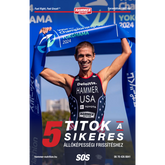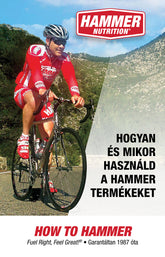Winter Sportswear for Athletes: How to Dress for Cold Weather Training
Training in cold weather requires special attire, especially during the winter months when temperatures drop below freezing. Proper clothing not only ensures comfort but also helps prevent injuries and health issues that may arise due to cold exposure. Athletes—particularly runners—must consider both their body’s needs and the external weather conditions when dressing for cold-weather workouts.
Effects of Cold Weather on the Body
The temperature difference between the body and the cold environment puts extra stress on the body, which requires proper adaptation. Below are some of the key problems that cold weather can cause:
Joint Problems: Cold temperatures cause joints and ligaments to become stiffer, increasing the risk of injuries like strains and sprains. Unprotected areas like the knees are particularly susceptible to pain and inflammation.
Knee Cold Sensitivity: In cold and windy conditions, underdressed areas like the knees can easily get chilled. Cold knees can increase the likelihood of joint inflammation, especially for runners prone to knee issues.
Muscle Strain and Pulls: Proper warm-up is crucial, but if the body isn't adequately protected, muscles warm up more slowly, increasing the risk of strains or pulls.
Frostbite: In extremely cold conditions, frostbite is a serious concern, especially in the hands, feet, and ears. These areas are more prone to cold because blood circulation here is slower.
Why It’s Not a Good Idea to Run in Shorts in Freezing Temperatures?
One common mistake in winter running is that athletes—especially those less experienced—try to run in shorts. This should be avoided for several reasons:
Muscle and Joint Issues: The cold can cause the muscles around the knees and hips to become stiffer, which increases the likelihood of muscle strains or sprains. Joints also bear extra stress when they aren’t adequately protected.
Knee Cold Sensitivity: Protecting the knees and thigh muscles is essential during running. If these areas become too cold, it can not only be uncomfortable but also lead to long-term joint problems. Cold knees can become stiff, making movement less fluid and increasing discomfort.
How Should a Runner Dress in Winter?
While not every runner reacts the same way to cold weather, it’s important to consider both your body’s needs and the external factors when preparing for a winter run. The following principles help ensure a comfortable and safe training experience in cold temperatures:
Layering: The best approach is to layer your clothing, which allows you to regulate body temperature effectively. The base layer should be moisture-wicking (e.g., merino wool or synthetic materials) to pull sweat away from your skin. The middle layer provides insulation, while the outer layer should be wind- and water-resistant to protect you from snow, rain, and wind.
Warm-Up Properly: Warming up is even more critical in cold weather. A proper warm-up prepares your muscles and joints for the increased workload and reduces the risk of injury.
Knee and Joint Protection: For additional protection, consider wearing knee supports or thermal sleeves. These help to prevent discomfort and pain caused by cold-induced stiffness in the knees and legs.
Protect Extremities: Protecting the hands, feet, and head is especially important. Wear thick yet breathable gloves, warm socks, and a hat or headband to keep your ears and head warm. These areas are more vulnerable to the cold due to slower blood circulation.
Don’t Overdress: While it’s important to stay warm, dressing in too many layers or too thick of clothing can restrict movement and cause excessive sweating. The goal is to maintain a steady body temperature without overheating. Excess moisture from sweating can freeze in cold temperatures, leading to discomfort.
Conclusion
Proper attire is crucial for comfort and injury prevention during winter running. Key strategies include layering, warming up effectively, and using protective accessories for the knees, joints, and extremities. Avoid wearing too little, as this can lead to muscle and joint issues, but also avoid overdressing, which can cause overheating and moisture buildup. Winter running can be enjoyable and safe with the right clothing and attention to your body’s needs.











